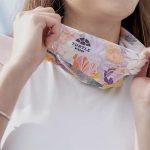Oakley, Inc. announced fourth quarter net sales increased 14.1 percent, to $102.9 million, compared with $90.2 million in the fourth quarter of 2001. Net income for the fourth quarter totaled $2.3 million, or $0.03 per diluted share, excluding a previously announced after-tax restructuring charge of $1.8 million, or $0.02 per diluted share. Net income for the comparable period of 2001 totaled $2.4 million, or $0.03 per diluted share, excluding a tax rate benefit of $0.02 per diluted share.
The $1.8 million after-tax fourth quarter charge, previously announced on December 5, 2002, resulted from restructuring the company’s European operations. The charge includes modifying and terminating relationships with several outside sales agents. Changes will also be implemented to rationalize other warehousing and distribution functions within the European markets. Payback is expected in the form of increased European net sales and reduced operating expenses over the course of the next 12 to 18 months.
Full year 2002 net sales reached a record $489.6 million, up 14.0 percent from $429.3 million in 2001. Net income, excluding the European restructuring charge, totaled $42.4 million, or $0.61 per diluted share. In 2001 the company reported net income of $46.1 million, or $0.66 per diluted share, excluding a tax rate benefit of $0.06 per diluted share.
“Oakley’s portfolio of inventions has never been broader or stronger,” commented Jim Jannard, Chairman and Chief Executive Officer. “In Oakley’s 27 year history, Ive learned that the best way to manage a company through difficult economic periods is to focus on the things we do best and position ourselves for the eventual recovery. That’s what were doing today at Oakley.”
Oakley’s Chief Operating Officer Link Newcomb commented, “2002 marked the first year in Oakley’s history in which our net sales exceeded $100 million in each quarter. Our newer categories — apparel, prescription eyewear, footwear and watches — grew to represent more than 25 percent of gross sales for the full year. Spring 2003 apparel bookings are very strong, reinforcing our momentum in the largest of these categories. We plan to continue expanding the product offerings in each of the newer categories to capitalize on what we believe remain substantial opportunities for the Oakley brand.
“We also made significant progress on our strategy to diversify our distribution channels. During 2002 we added eight Oakley retail stores, bringing our total to 14, and we successfully leveraged our October 2001 acquisition of sunglass retailer Iacon, Inc., adding 21 stores to bring our total to 64. These stores provide a perfect showcase for our new products across all categories. With the store growth we expect in 2003, we expect sales through Oakley retail stores to exceed those to our largest wholesale customer. In addition, we enter 2003 with plans to roll out 49 new Oakley concept shops during the spring with several leading department store retailers, bringing our total concept shop count to 88.”
Newcomb concluded, “We are operating in very uncertain times, but we enter 2003 with a solid balance sheet and exciting new products for the spring and fall seasons. We believe our obsessive commitment to product innovation, balanced with conservative financial management and cost reduction efforts, will see us through this period and position us for improved performance when recovery arrives.”
Fourth Quarter Financial Analysis
U.S. net sales, excluding the company’s retail store operations, decreased 7.4 percent in the fourth quarter, to $36.1 million, compared with $39.0 million last year. Sales to the company’s diverse specialty account base and other domestic sales excluding Sunglass Hut decreased 7.0 percent to $30.2 million. U.S. net sales to Sunglass Hut, the company’s largest customer, decreased 9.4 percent, to $5.9 million, during the quarter.
Oakley’s international operations had their strongest sales growth in six quarters. Net sales increased 24.0 percent (19.3 percent on a constant dollar basis) to $57.3 million in the fourth quarter, compared with $46.2 million last year. A double-digit increase in sunglass sales, combined with strong goggle and newer category sales, fueled the growth. Europe, Japan, Latin America, Canada and South Pacific each achieved double-digit growth, partially offset by declines in the rest of Asia.
Sunglass gross sales increased 1.4 percent in the fourth quarter, to $57.9 million, as soft consumer spending and weak retail conditions persisted throughout the quarter. The average sunglass selling price increased 5.7 percent compared to the fourth quarter of 2001, partially offset by a 4.0 percent decline in unit shipments. As previously disclosed by the company in December 2002, fourth quarter sunglass sales were also adversely affected by other factors. Deliveries of 2002 summer sunglass introductions to retailers were delayed, resulting in fewer turns during the summer selling season and reducing the level of reorders during the holiday season. Orders from Foot Locker were significantly reduced as they prepared to reduce the number of doors carrying Oakley sunglasses. Finally, Sunglass Hut’s return as a customer appeared to have a negative impact on other retailers, compared to the prior year period when Sunglass Hut was not purchasing Oakley products. Global net sales to Sunglass Hut increased 9.7 percent, to $7.9 million, during the quarter.
Sales through Oakley’s retail store operations reached $9.5 million during the quarter, compared to $5.0 million in the fourth quarter of 2001. During the fourth quarter, the company opened four new Oakley retail stores and seven new Iacon stores in the U.S.
Combined fourth quarter sales of the company’s apparel, prescription eyewear, footwear and watch categories grew 26.1 percent, to $30.0 million, and accounted for 27.1 percent of total fourth quarter gross sales. Gross sales of the company’s goggles increased more than 50 percent in the fourth quarter of 2002, driven by the strong introduction of Wisdom(TM), Oakley’s newest, most advanced snow goggle.
Fourth quarter gross margins were 53.0 percent compared with 54.9 percent in last year’s comparable period, reflecting the decline in sunglass volumes, a greater contribution to sales from footwear, apparel and goggles which each carry lower gross margins, and an increase in sales of excess footwear and apparel inventory through close-out channels. Operating expenses were 49.2 percent of net sales in the quarter, before restructuring charges, down from 50.2 percent the prior year, as shipping and general and administrative costs increased at a rate slower than sales.
The company’s order backlog as of December 31, 2002 was $42.7 million, up 16.3 percent compared with $36.7 million at the same time last year. Prebook orders from retailers for the company’s spring footwear and apparel lines totaled $34.0 million at December 31, 2002, up 18.9 percent compared with $28.6 million at the same time last year, reflecting continued growth in these important newer categories.
The company’s consolidated inventory totaled $87.0 million at December 31, 2002, compared with $85.9 million at September 30, 2002 and $77.3 million at December 31, 2001. This inventory reflects the 14.1 percent growth in trailing-12-month sales and expanded company-owned retail operations. Accounts receivable declined to $68.1 million at December 31, 2002, compared with $83.7 million at September 30, 2002 and $74.8 million at December 31, 2001.
Full Year 2002 Financial Summary
Total 2002 net sales increased 14.0 percent to a record $489.6 million, fueled by a 19.2 percent increase in U.S. net sales to $254.0 million, including a 267.1 percent increase in Oakley’s retail store sales to $32.6 million. International net sales increased 9.0 percent to $235.5 million. International and U.S. net sales in 2001 were $216.1 million and $213.1 million, respectively.
Sunglass gross sales increased 9.5 percent, to $330.2 million, compared with $301.6 million in 2001. The average selling price increased 9.8 percent, partially offset by a 0.3 percent decline in unit shipments. Global net sales to Sunglass Hut increased 15.8 percent, to $59.7 million, compared with $51.5 million in 2001.
Combined full year gross sales of the company’s apparel, prescription eyewear, footwear and watch categories grew 32.7 percent to $133.7 million and accounted for 25.3 percent of full year gross sales, compared with 22.4 percent of full year 2001 gross sales.
Apparel gross sales increased 49.3 percent for the full year, to $56.6 million, compared with $37.9 million in 2001. Strong initial penetration into the golf, surf and biking markets drove the increase. In addition, the roll out of 39 Oakley concept shops with several key department store retail partners in the U.S. provided an expanded distribution channel for apparel and increased visibility for the Oakley brand.
Prescription eyewear gross sales increased 38.5 percent for the full year, to $34.2 million, compared with $24.7 million in 2001. The company’s prescription eyewear frame line now consists of 11 styles and 40 SKUs.
Footwear gross sales grew 4.0 percent for the full year, to $31.2 million, compared with $30.0 million in 2001. The company’s spring assortment of sandals continued to build on the momentum of the prior year’s spring season and provided a base to offset disappointing sales of the company’s fall footwear line.
Watch gross sales increased 41.5 percent for the full year, to $11.6 million, compared with $8.2 million in 2001. Watch growth was led by strong second half launches of the extended Crush(TM) product line including the Detonator(TM), Crush(TM) 2.0 and Crush(TM) 2.5.
Goggle gross sales grew 8.2 percent for the full year, to $27.8 million, up from $25.7 million in 2001.
Stock Repurchase Program
On September 10, 2002, the company’s board of directors authorized a $20 million stock repurchase program to occur from time to time as market conditions warrant. Since the time of this authorization, the company has repurchased 657,200 shares for $6.8 million at an average share price of approximately $10.30. The company intends to remain active with the share repurchase program should the right market conditions exist.
2003 Guidance
The uncertain economy and generally weak retail environment in most of Oakley’s key global markets provides a very difficult backdrop against which to forecast. Because the company’s sunglass sales rely on “at-once” orders from retailers to replenish inventory sold to consumers, a weak retail environment complicates management’s attempts to accurately assess future order and sales trends. Because Oakley is an integrated manufacturer of its sunglass products, a small negative variance in sunglass sales volume has a relatively large negative impact on gross margins and net income due to the fixed-cost nature of its manufacturing operations. Conversely, a small positive variance in sunglass sales volumes has a relatively large positive impact on gross margins and net income.
Management has begun implementing cost control initiatives to reduce 2003 budgeted expenses by at least $5 million and to minimize future increases in operating expenses. Approximately one-half of the savings are targeted to come from advertising and marketing, with the remainder generated from reductions in planned new personnel, travel and other discretionary expenses. Management’s current 2003 outlook reflects the anticipated benefits from these initiatives.
For the full year 2003, the company is reaffirming its guidance provided on January 9, 2003 that assumed annual sales growth of approximately 15 percent to $560 million and earnings per diluted share in the range of $0.55 to $0.60. This outlook assumes that weakness in the general retail environment will continue into 2003. It also assumes favorable consumer response to new product introductions scheduled for the second and third quarters, and slow, sustained improvement in the retail environment in key global markets as the year progresses. Investors and analysts are strongly encouraged to take all of the market and operational factors discussed above into careful consideration in formulating their own full year 2003 Oakley financial models.
Retail trends through early February have continued to be challenging. The uncertainty surrounding geopolitical affairs makes it extremely difficult to predict near-term retail customer and consumer behavior. As a result, management is not able at this time to reaffirm its previous first quarter guidance provided on January 9. In the first quarter, the company’s ability to achieve its previous guidance will be heavily dependent on the timely introduction of its new sunglass products scheduled for March, consumers acceptance of those new products and the actual pace of retail activity during March. March typically accounts for more than 40 percent of Oakley’s first quarter sunglass sales because it is the primary shipping window for the spring sunglass season and typically includes a number of new Oakley sunglass product introductions.
OAKLEY, INC.
CONSOLIDATED STATEMENTS OF INCOME
(in thousands except per share data)
Three Months Ended Twelve Months Ended
December 31, December 31,
2002 2001 2002 2001
Net sales $ 102,923 $ 90,227 $ 489,552 $ 429,267
Cost of goods sold 48,367 40,674 211,962 174,332
Gross profit 54,556 49,553 277,590 254,935
Operating expenses:
Research and
development 3,807 3,170 16,016 11,318
Selling 33,204 (a) 26,670 126,995 (a) 108,948
Shipping and
warehousing 4,335 (b) 3,758 18,083 (b) 16,997
General and
administrative 12,083 11,687 52,335 43,606
Total operating
expenses 53,429 45,285 213,429 180,869
Operating income 1,127 4,268 64,161 74,066
Interest expense, net 378 612 1,643 3,108
Income before provision
for income taxes 749 3,656 62,518 70,958
Provision for income
taxes 262 397 21,881 20,587
Net income $ 487 $ 3,259 $ 40,637 $ 50,371













